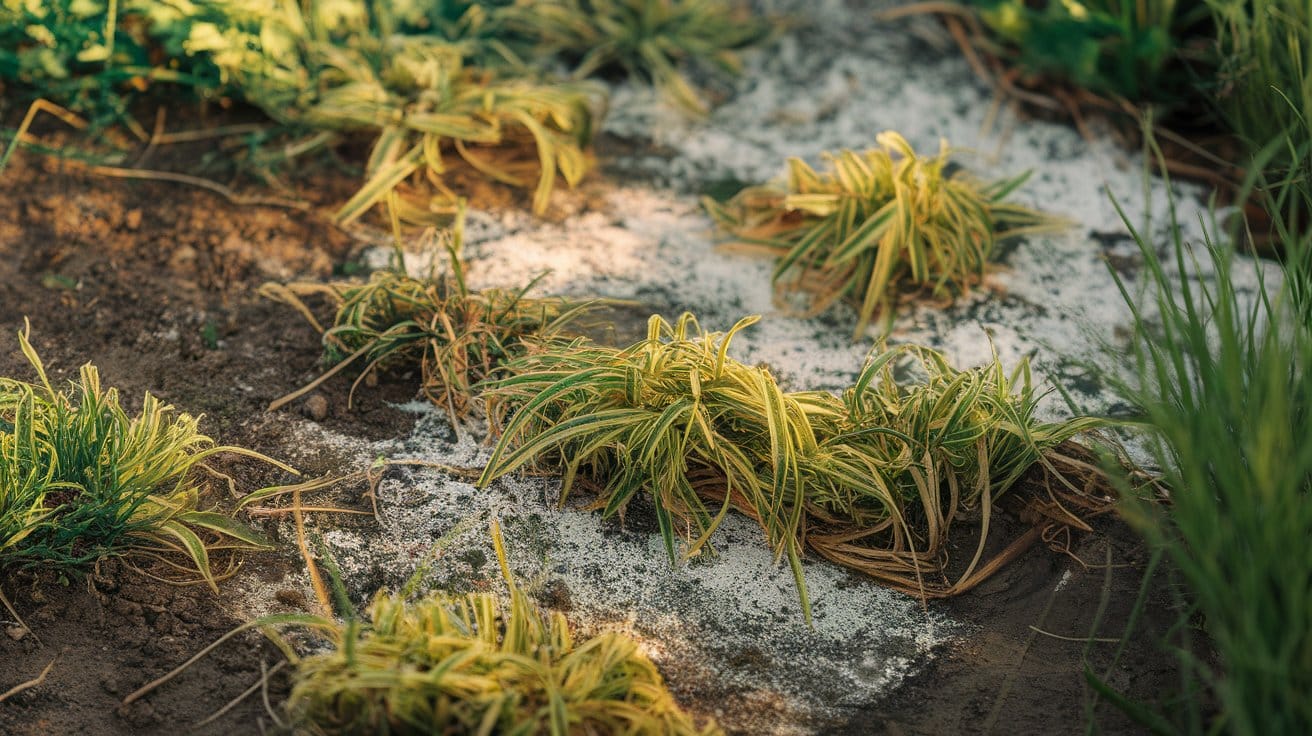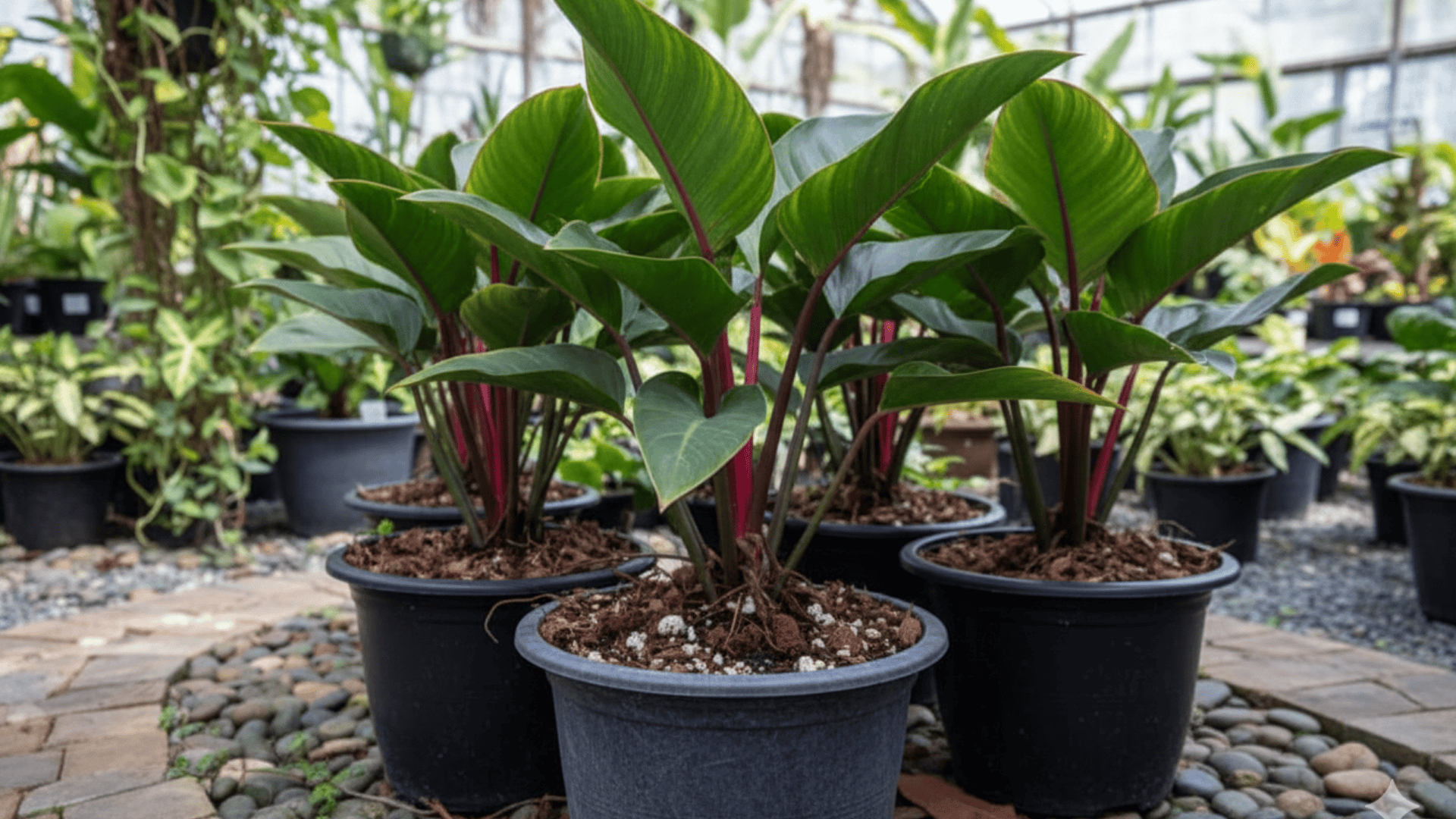The pothos is one of those plants that instantly brightens any room with its calm, steady growth.
Over time, I’ve noticed that what truly supports this beauty lies beneath the surface.
The right pothos soil mix gives roots the comfort they need to breathe, absorb, and grow without strain.
It’s not only about holding moisture but about maintaining the balance that keeps your plant healthy throughout the year.
Good soil becomes the quiet foundation that helps every leaf stay vibrant and full.
This blog shares an overview of how soil choice shapes growth and why creating the right mix at home sets the stage for lasting indoor success.
Why The Right Soil Mix is Important For Pothos?
The right soil is what keeps pothos roots strong, balanced, and capable of continuous growth.
If soil holds too much water, roots can suffocate and lose strength, leading to drooping leaves.
Plant stress often starts below the surface, not from how often you water.
The correct soil for pothos maintains airflow, nutrients, and light moisture around the roots.
It holds just enough hydration to sustain growth without leaving roots waterlogged.
This stability helps nutrients reach the plant easily, prevents rot, and encourages steady, healthy development that allows pothos to flourish in varied indoor environments throughout the year.
What is The Best Soil Mixture For Pothos?
The best soil for pothos should feel light, airy, and slightly damp without trapping excess water.
Choosing the right blend depends on your climate and watering style, but each option below supports strong root systems and steady foliage.
Each of these blends can serve as the best soil for pothos with small adjustments.
Add more perlite for improved drainage or extra coir for better moisture control.
The goal is a breathable, nutrient-rich soil for pothos that supports consistent growth throughout the year.
| Soil Type | Main Components | Best For |
|---|---|---|
| All-Purpose Potting Mix | Potting soil, compost, perlite | Beginners’ and everyday pothos care |
| Coco Coir-Based Mix | Coconut coir, perlite, bark | Humid conditions where roots need airflow |
| Peat Moss Mix | Peat moss, sand, compost | Drier homes that need more moisture control |
| Perlite Enriched Mix | Potting soil, perlite, pumice | Pothos in areas with limited airflow or high humidity |
| Bark And Compost Blend | Orchid bark, compost, and coir | Mature plants need more structure and nutrition |
Pothos Soil Mix DIY
I like creating my own soil blend because it gives me control over how well my pothos grows.
DIYing your mix is simple. It’s just about combining a few ingredients that help roots breathe and stay healthy.
1. Gather Ingredients And Tools

Start by collecting all the essentials before you begin mixing.
Having everything ready ensures a smooth, even mixing process from start to finish.
| Category | Items | Purpose |
|---|---|---|
| Main Ingredients | Potting soil, perlite or pumice, coconut coir or peat moss, bark chips | Create the base mix for drainage, moisture, and structure |
| Optional Add-ins | Compost or worm castings, charcoal | Add nutrients and freshness to the soil |
| Tools | Clean bucket or tray, trowel, gloves, water spray, or jug | For mixing, handling, and moistening the blend evenly |
2. Measure And Proportion Accurately
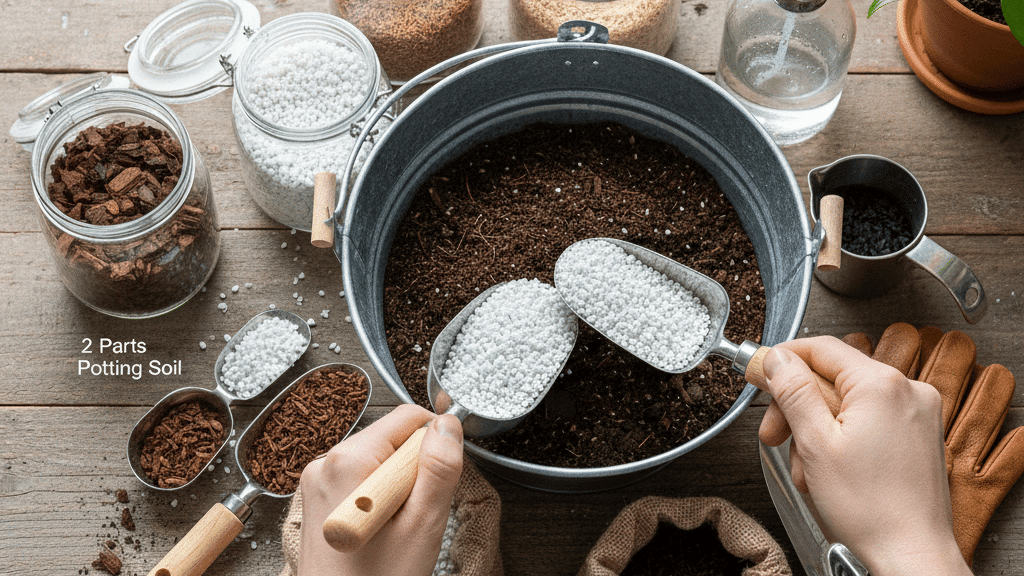
The right ratio creates the ideal balance of moisture, drainage, and oxygen, which is everything a pothos needs to grow strong roots and lush leaves.
Use equal scoops or containers to measure each part so your mix stays consistent.
| Ingredient | Ratio (Parts) | Purpose |
|---|---|---|
| Coco Coir or Peat Moss | 2 parts | Retains moisture while keeping the mix light |
| Perlite | 1 part | Improves drainage and airflow |
| Bark Chips / Orchid Bark | 1 part | Adds structure and prevents compaction |
| Compost or Worm Castings (optional) | 1/2 part | Adds nutrients for steady, natural growth |
3. Mix The Ingredients Thoroughly
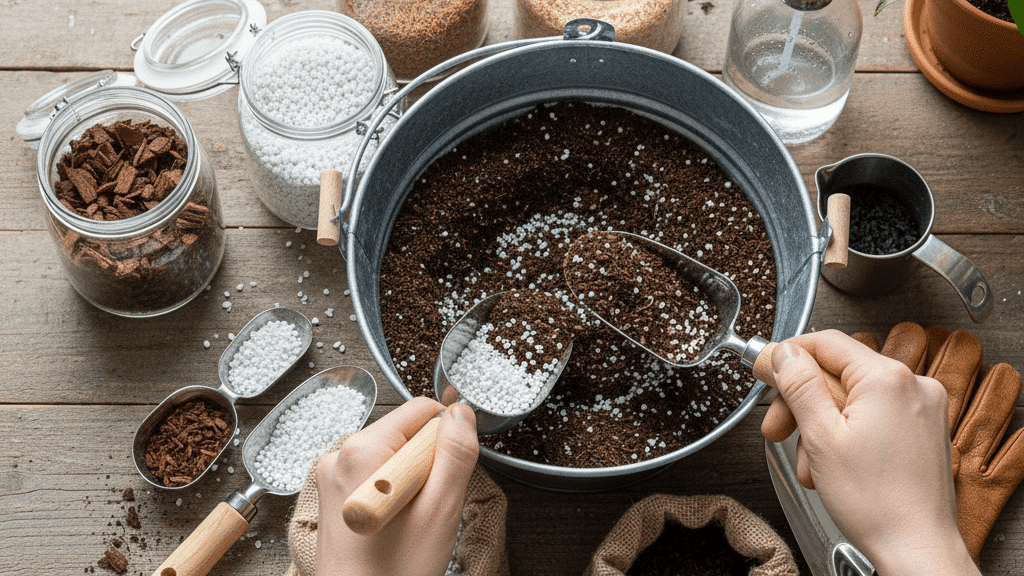
Transfer all the dry components into a bucket or large tray and begin mixing with your hands or a trowel.
Turn the materials from the bottom upward, folding them until the blend looks uniform.
Every scoop should include both fine and coarse textures, ensuring no uneven clumps remain.
Proper mixing creates a consistent soil for pothos that distributes water evenly and allows oxygen to reach roots without compacting over time.
4. Moisten And Test The Texture
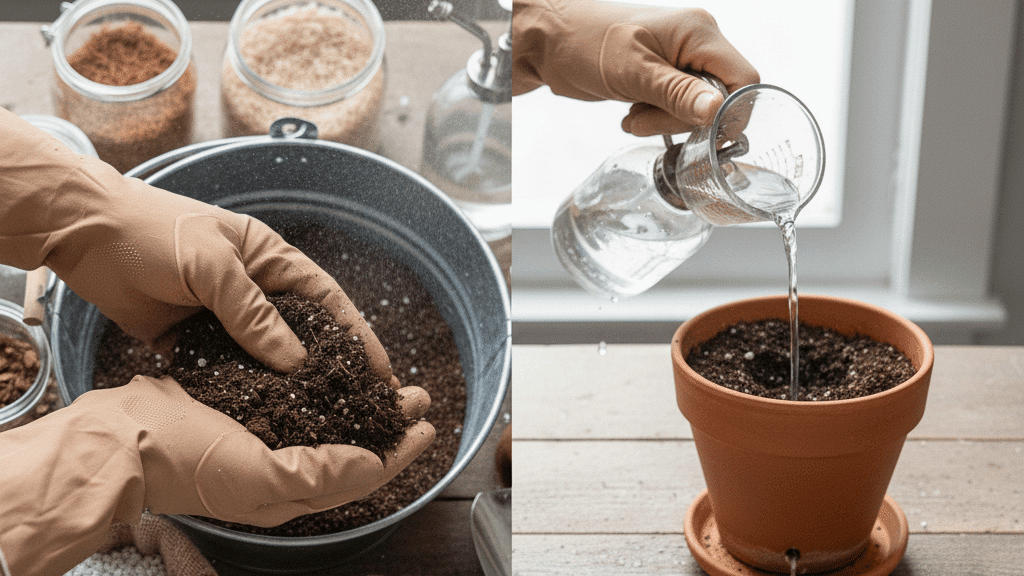
Slowly add small amounts of water while mixing until the soil feels evenly damp but not soggy.
When squeezed, it should lightly hold its shape, then crumble apart easily.
This test helps confirm that the mix retains moisture without becoming dense.
For an extra check, pour a little water through the mix in a pot.
If it drains within seconds, your pothos soil mix has the perfect texture for root health.
5. Adjust And Finalize The Blend
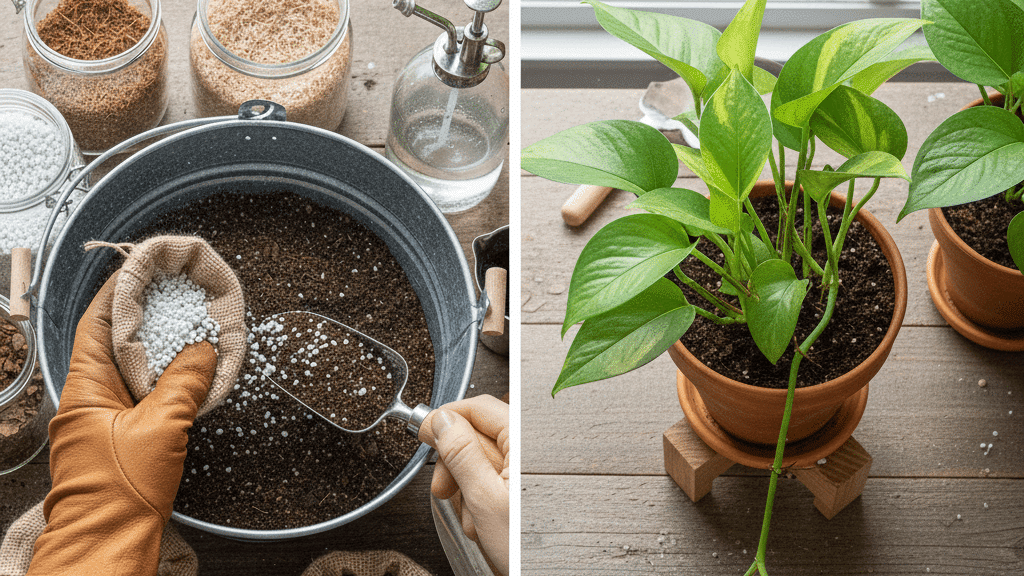
Take a moment to check how the mix feels in your hands.
If it crumbles too easily, add a little more coir or peat to help it hold some moisture.
If it stays too wet or heavy, sprinkle in a bit more perlite or bark chips so water can move through freely.
Mix in a small handful of compost for a natural nutrient lift.
Once the texture feels light and slightly springy, the soil is ready.
This balanced mix will keep the pothos roots comfortable and growing strong with little effort.
Common Mistakes To Avoid When Mixing Soil
I often notice small mistakes that prevent even healthy pothos from reaching their full potential.
Paying attention to a few key details can make your pothos soil mix perform much better.
-
Using Garden Soil Instead of Potting Mix: Garden soil is too dense and traps water, stopping roots from breathing and causing unhealthy pothos growth.
-
Skipping Drainage Materials Like Perlite Or Bark: Without perlite or bark, the mix compacts easily, reducing airflow and leading to soggy, weak pothos roots.
-
Overwatering Or Using Pots Without Drainage Holes: Excess water collects at the bottom, causing root rot and harming the best soil for pothos.
How to Maintain Healthy Soil For Pothos?
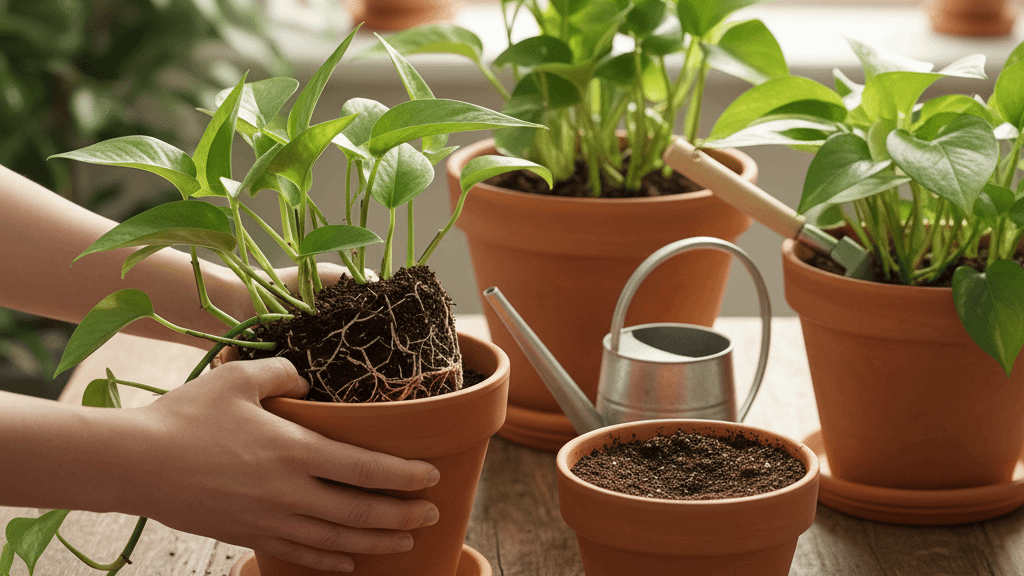
Keeping pothos soil healthy requires small, regular efforts instead of major changes.
Even the best soil for pothos benefits from consistent upkeep to stay fresh and effective.
-
Repot Every 12–18 Months: This helps prevent compaction, replenishes nutrients, and gives roots more space to grow.
-
Top Dress Between Repotting: Adding a thin layer of fresh soil for pothos every few months maintains nutrient balance.
-
Fertilize Lightly: A diluted liquid fertilizer once a month during spring and summer supports steady and healthy growth.
-
Check Soil Moisture: Let the top inch dry before watering again to prevent overwatering and suffocated roots.
-
Maintain Airflow And Texture: Keep the soil loose, never tightly packed, to ensure oxygen circulates and root stress is avoided.
Conclusion
Healthy pothos growth begins with care that starts below the surface.
The right pothos soil mix sets the stage, but the way it is maintained truly defines the plant’s strength.
Observing how moisture levels change, how the soil feels between waterings, and how the leaves respond can help you recognize what keeps your plant thriving.
Regular attention ensures the mix stays airy, balanced, and supportive through each growth phase.
When the foundation remains consistent, pothos can flourish with little effort while staying lush and vibrant year-round.
Once you try making your own mix, you’ll notice how quickly pothos responds to the better balance.
Keep tending to your plant with steady care and share in the comments how your own pothos has responded to its mix.
Frequently Asked Questions
Where Is the Best Place to Put Pothos in Your House?
The best place to put pothos is near bright, indirect light, such as close to a window, avoiding harsh sunlight while keeping humidity and temperature comfortably moderate indoors.
Do you Water Pothos After Repotting?
Yes, water pothos lightly after repotting to help the soil settle around the roots, but ensure the mix is moist, not soggy, to prevent stress or root rot.
Do Pothos Like to Be Crowded?
Yes, pothos like being slightly crowded since it encourages fuller growth, but once roots fill the pot completely, repotting is needed to maintain healthy development and nutrient absorption.






